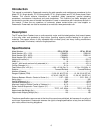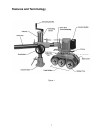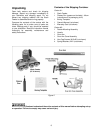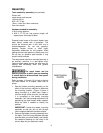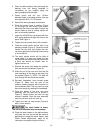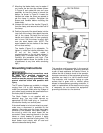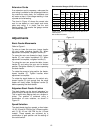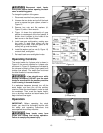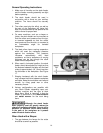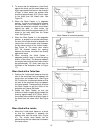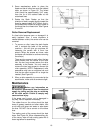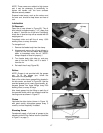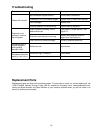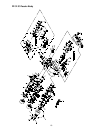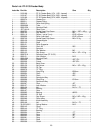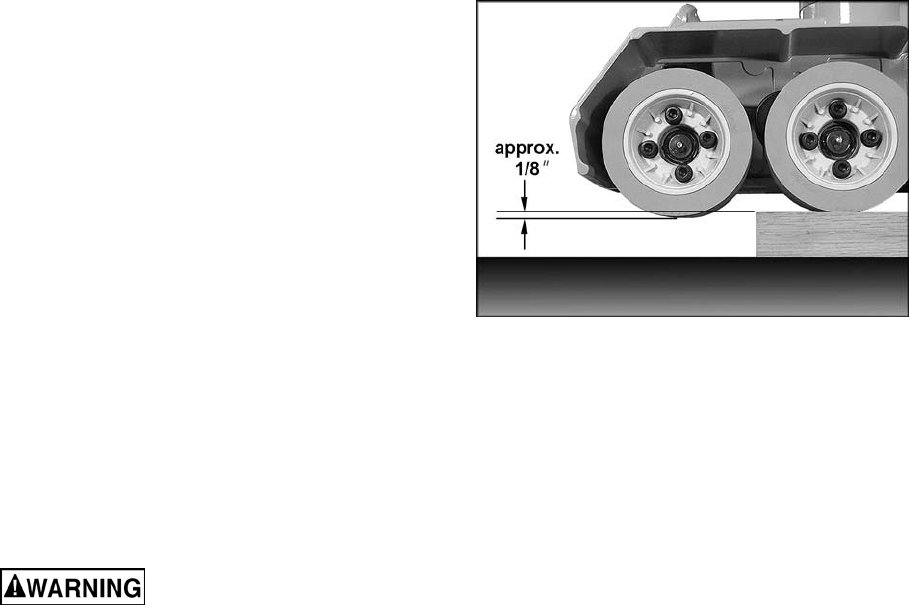
14
General Operating Instructions
1. Make sure all handles on the stock feeder
and the feeder mounting assembly are tight
before operating.
2. The stock feeder should be used in
conjunction with a fence on your auxiliary
machine. The fence should be securely
fixed.
3. The rollers must grip the offcut, as well as
the part of the workpiece still being fed.
Also, the rollers should be set parallel to the
table or fence for proper feed.
4. On some machines, such as a shaper or
jointer, the stock feeder can be mounted so
that the rollers exert pressure from the top,
or mounted edgewise so that the rollers
exert pressure from the side, or mounted at
an intermediate angle for beveled
workpieces.
5. The feed rollers have a spring suspension
which will exert the necessary pressure
against the workpiece. This pressure
increases automatically with feed
resistance, so that a workpiece of varying
thickness can be fed through the stock
feeder without adjustments.
6. When used in horizontal position, the stock
feeder should be adjusted for height so that
the distance between the table and the feed
rollers is approximately 1/8” (3mm) less than
the thickness of the workpiece. See Figure
17.
7. Shaping hardwood with the stock feeder
may increase the friction between workpiece
and table. Keep the work table rust-free and
smooth, by using paste wax or other
necessary means.
8. Various configurations are possible with
your Stock Feeder, depending upon your
auxiliary machine and the type of work
being done. What is important is that the
feeder is positioned in the most effective
and safest manner for the work being
done.
Although the stock feeder
when properly used will greatly reduce the
chance of workpiece kickback, there is still a
potential for kickback. Never stand directly
in the path of the workpiece as it passes
under the stock feeder rollers.
When Used with a Shaper
1. The gap between the fences for the cutter
should be as small as possible.
Figure 17



